Embarking on the journey of indoor gardening can be both rewarding and challenging, especially when it comes to providing your leafy friends with just the right amount of hydration. Fear not, fellow plant enthusiasts!
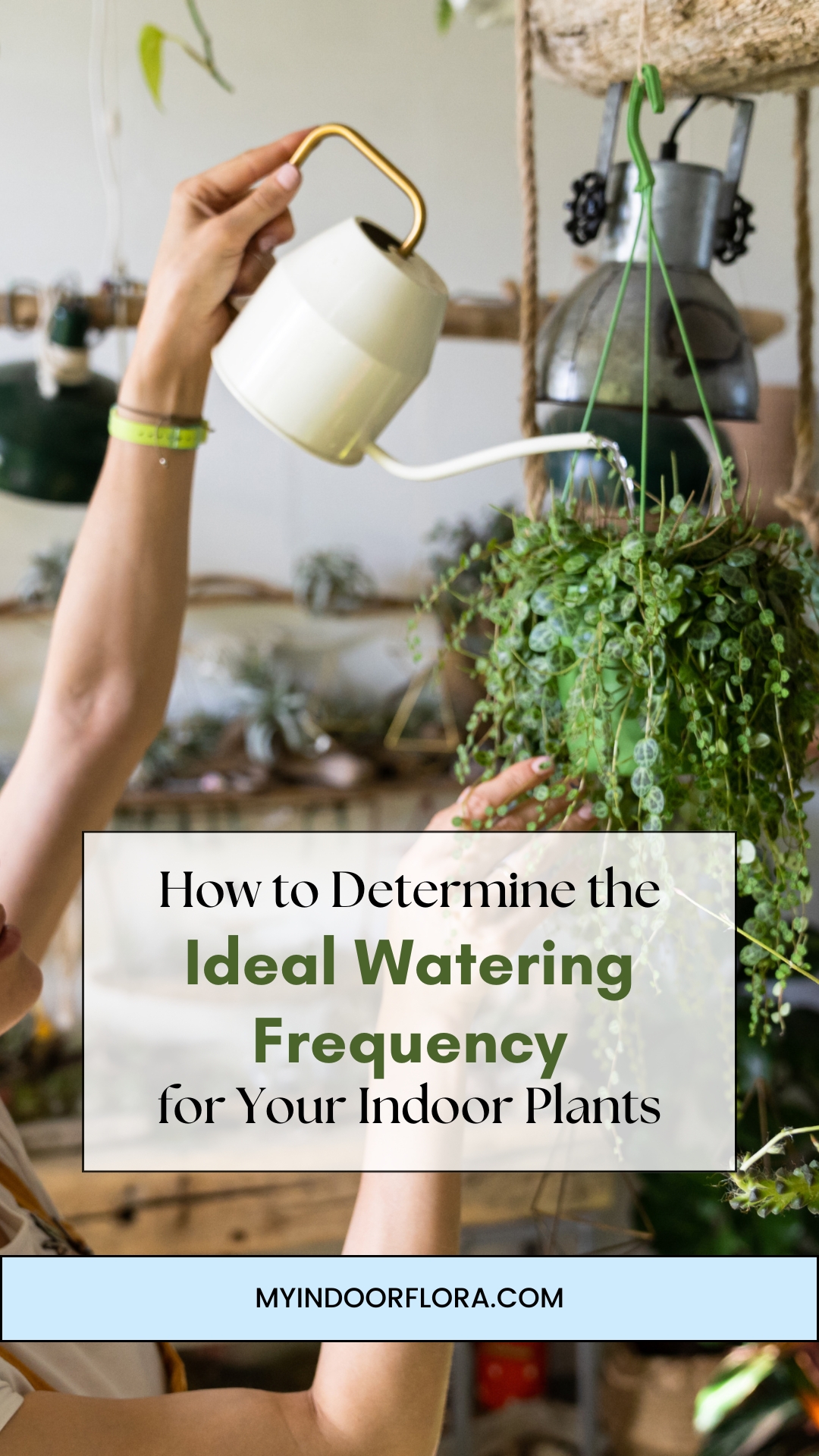
In this guide, we’ll unravel the mystery behind the perfect watering frequency for your indoor plants. Gone are the days of trial and error, over-watering, and parched foliage. Instead, we’ll dive into the art and science of plant care, empowering you to nurture your green companions towards lush, vibrant growth.
Join us as we explore the world of indoor plant hydration and discover how to achieve the ultimate balance for your botanical oasis.
Understanding Your Indoor Plants
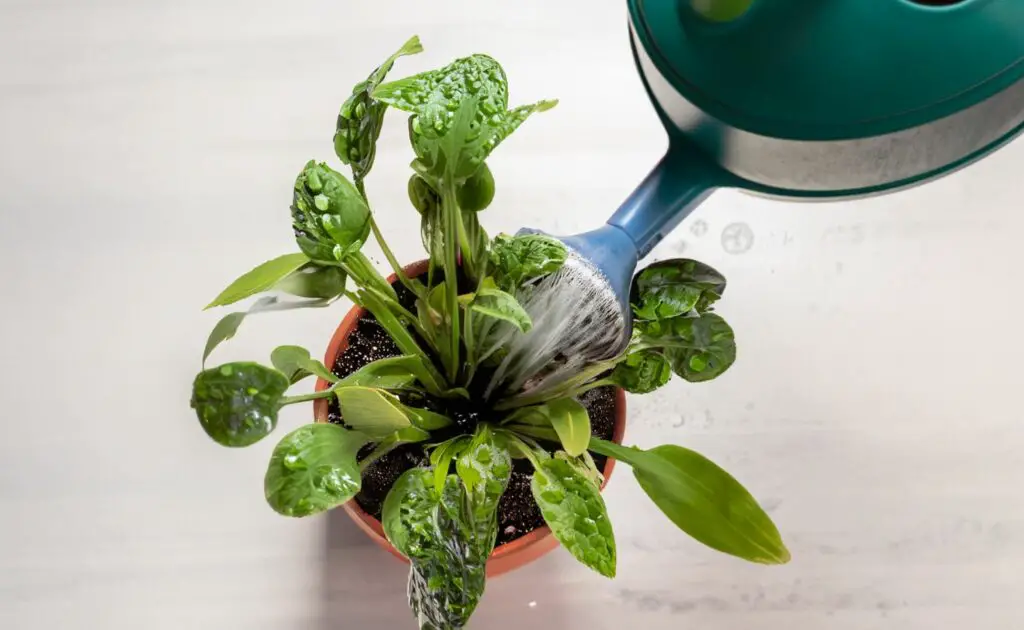
Knowing your indoor plants is crucial in determining their ideal watering frequency. Different types of indoor plants have varying water requirements, and factors such as pot size, soil type, and temperature also affect their watering needs.
Different Types of Indoor Plants
Some indoor plants, such as succulents and cacti, are adapted to arid environments and require less frequent watering. Others, like ferns and tropical plants, thrive in humid conditions and need more frequent watering.
Here are some common types of indoor plants and their general watering needs:
| Plant Type | Watering Frequency |
|---|---|
| Succulents and cacti | Every 2-4 weeks |
| Ferns and tropical plants | Every 1-2 weeks |
| Herbs | Every 1-2 weeks |
| Flowering plants | Every 1-2 weeks |
Factors Affecting Watering Frequency
Aside from the type of plant, several factors affect the watering frequency of your indoor plants:
- Pot size: Smaller pots dry out more quickly than larger ones, so plants in smaller pots may need more frequent watering.
- Soil type: Different types of soil hold water differently. For example, sandy soil drains more quickly than clay soil, so plants in sandy soil may need more frequent watering.
- Temperature and humidity: Plants in warmer or drier environments may need more frequent watering, while those in cooler or more humid environments may need less.
- Season: Plants may need more frequent watering during the summer months when temperatures are higher and less frequent watering during the winter months when temperatures are lower.
By understanding the watering needs of your indoor plants and the factors that affect their water requirements, you can determine the ideal watering frequency for each plant and help them thrive.
Signs Your Plant Needs Watering
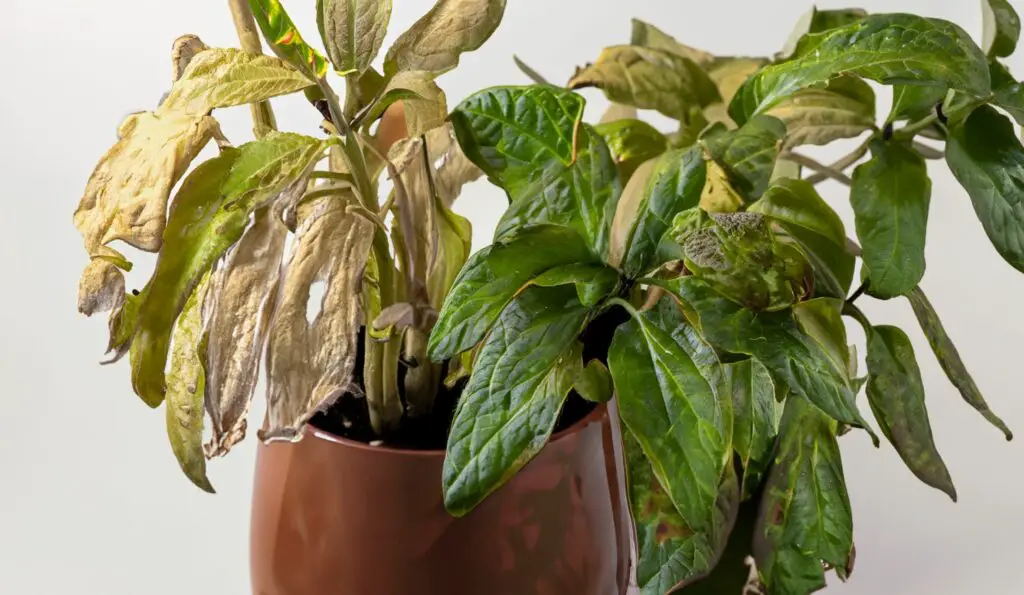
Knowing when to water your indoor plants can be a challenge, but there are a few signs you can look for to determine if your plant needs watering.
One of the most common signs that your plant needs water is when the soil feels dry to the touch. You can check the soil by sticking your finger about 2-3 inches into the soil. If the soil feels dry, it’s time to water your plant.
Another sign that your plant needs water is when the leaves start to wilt or droop. This is because the plant is not getting enough water to support its leaves. If you notice this sign, it’s important to water your plant as soon as possible to prevent further damage.
Yellowing leaves can also be a sign that your plant needs water. When a plant is dehydrated, its leaves will start to turn yellow and eventually fall off. If you notice yellowing leaves, check the soil moisture level and water your plant if necessary.
Finally, if your plant is not growing as quickly as it used to, it may be a sign that it needs more water. Plants need water to grow and thrive, so if your plant is not growing as quickly as it should be, consider watering it more frequently.
By paying attention to these signs, you can determine when your indoor plants need watering and keep them healthy and thriving.
Determining the Ideal Watering Frequency
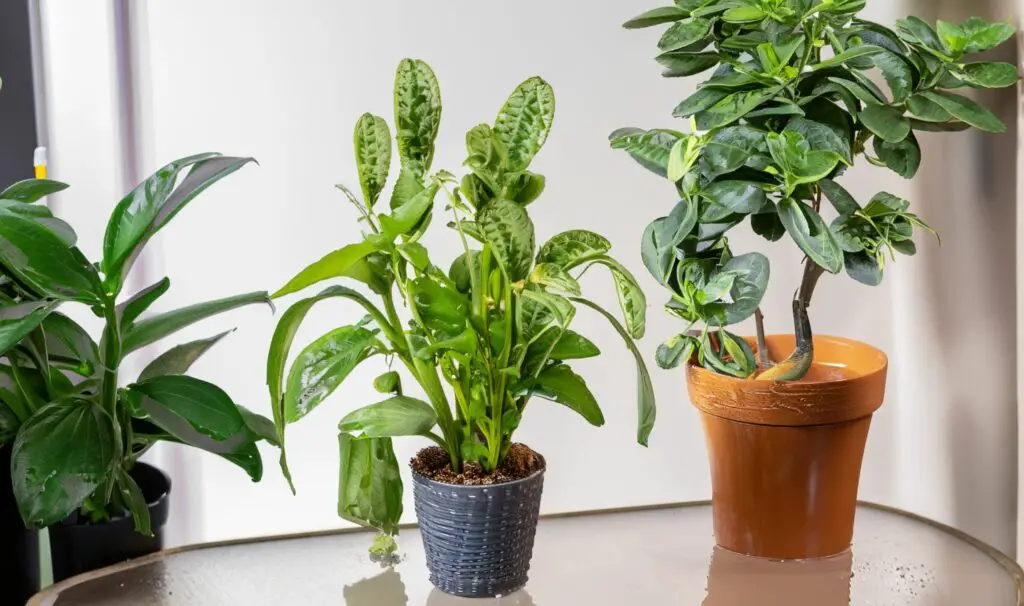
Watering your indoor plants can be a bit tricky. Overwatering can lead to root rot, while underwatering can cause the plants to wilt and eventually die. Determining the ideal watering frequency for your indoor plants is crucial to their health and growth. Here are some tips to help you determine the ideal watering frequency for your indoor plants:
Watering Methods
Before you can determine the ideal watering frequency, you need to know the best way to water your plants. The two most common methods are top watering and bottom watering.
- Top watering: This method involves pouring water directly onto the soil from the top. This method is best for plants that prefer drier soil and those with shallow roots.
- Bottom watering: This method involves placing the plant in a tray of water and allowing the roots to soak up the water from the bottom. This method is best for plants that prefer moist soil and those with deeper roots.
Testing Soil Moisture
The best way to determine the ideal watering frequency for your plants is by testing the soil moisture. Here are a few ways to test the soil moisture:
- Stick your finger in the soil: If the top inch of soil feels dry, it’s time to water your plant. If the soil feels moist, wait a few more days before watering.
- Use a moisture meter: A moisture meter is a tool that measures the moisture content in the soil. Simply insert the probe into the soil and check the reading. If the reading is low, it’s time to water your plant.
- Check the weight of the pot: If the pot feels light, it’s time to water your plant. If the pot feels heavy, the soil is still moist, and you can wait a few more days before watering.
By using these watering methods and testing the soil moisture, you can determine the ideal watering frequency for your indoor plants. Remember, every plant is different, and the ideal watering frequency may vary depending on the plant’s species, size, and environment. With a little experimentation and observation, you’ll be able to find the perfect watering schedule for your indoor plants.
Factors to Consider
When determining the ideal watering frequency for your indoor plants, there are several factors to consider. These factors include:
Humidity
The humidity levels in your home can greatly affect how often you should water your indoor plants. If your home has low humidity levels, your plants may need to be watered more frequently. Conversely, if your home has high humidity levels, your plants may not need to be watered as often. You can increase humidity levels by using a humidifier or by placing a tray of water near your plants.
Temperature
The temperature of your home can also affect how often you should water your indoor plants. If your home is warm, your plants may need to be watered more frequently. If your home is cooler, your plants may not need to be watered as often. Keep in mind that temperature fluctuations can also affect your plants, so try to keep them in a consistent environment.
Light
The amount of light your plants receive can also affect their watering needs. Plants that receive more light may need to be watered more frequently, while plants that receive less light may not need to be watered as often. Keep in mind that direct sunlight can also dry out the soil more quickly, so be sure to monitor your plants closely if they are in a sunny location.
Plant Size
The size of your plant can also affect its watering needs. Larger plants may require more water than smaller plants, as they have a larger root system to support. Be sure to adjust your watering frequency accordingly based on the size of your plant.
Type of Pot
The type of pot you use can also affect how often you should water your indoor plants. Clay pots, for example, are porous and can dry out more quickly than plastic pots. Be sure to choose a pot that is appropriate for your plant’s needs and adjust your watering frequency accordingly.
Size of Pot
The size of your pot can also affect your plant’s watering needs. Larger pots can hold more water, which can help to prevent your plant from drying out too quickly. However, larger pots can also lead to overwatering, so be sure to monitor your plant closely and adjust your watering frequency as needed.
Type of Potting Mix
The type of potting mix you use can also affect your plant’s watering needs. Some potting mixes are designed to retain moisture, while others are designed to drain quickly. Be sure to choose a potting mix that is appropriate for your plant’s needs and adjust your watering frequency accordingly.
Ventilation
The ventilation in your home can also affect your plant’s watering needs. If your home is well-ventilated, your plants may dry out more quickly and require more frequent watering. If your home is poorly ventilated, your plants may not need to be watered as often.
Time of Year
The time of year can also affect your plant’s watering needs. During the summer months, your plants may need to be watered more frequently due to higher temperatures and increased sunlight. During the winter months, your plants may not need to be watered as often due to cooler temperatures and decreased sunlight.
How Long Can Indoor Plants Go Without Water
One of the most common questions asked by indoor plant owners is how long their plants can go without water. The answer to this question depends on various factors like the type of plant, the size of the pot, the temperature, humidity, and light conditions in your home, and the time of year.
Most indoor plants can go without water for a few days to a week. However, the watering needs may vary depending upon the weather and types of plants you have. While plants like succulents and cactus can survive longer, other tropical plants like monstera, pothos may suffer.
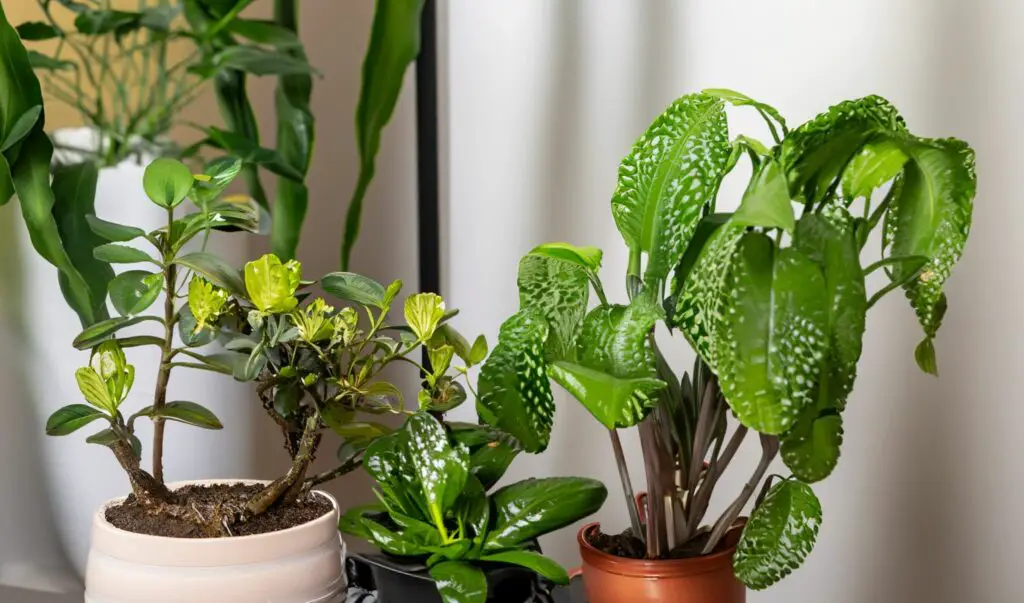
To determine how often you should water your indoor plants, you need to consider the plant’s water requirements, the pot size, and the environmental conditions in your home. For example, smaller pots dry out faster than larger ones, and plants in bright, sunny areas require more water than those in dimly lit rooms.
One way to check if your indoor plant needs water is to insert your finger into the soil up to your first knuckle. If the soil feels dry, it’s time to water your plant. However, if the soil is still moist, you can wait a few more days before watering again.
Another way to check if your plant needs water is to lift the pot. If the pot feels light, it may need watering. However, if it feels heavy, it’s probably still moist, and you can wait a few more days before watering.
Remember that overwatering can be just as harmful as underwatering. Too much water can lead to root rot and other fungal diseases, which can kill your indoor plants. Therefore, it’s essential to find the right balance and determine the ideal watering frequency for your indoor plants.
Common Plants And Their Watering Frequency
- Peace Lily (Spathiphyllum): Thriving in evenly moist soil, water this popular indoor plant weekly or when the top inch of soil feels dry. To prevent root rot, let the soil dry slightly between waterings.
- Phalaenopsis Orchids: Keep these orchids slightly moist by watering them weekly or when the potting mix feels dry. Ensure the water drains completely to prevent waterlogged roots.
- Nerve Plants (Fittonia): Maintain consistently moist soil by watering every 2-3 days or when the top inch of soil feels dry. Avoid complete soil dryness, as it causes the leaves to wilt.
- Succulents: These plants require well-draining soil and complete drying between waterings. Water them every 1-2 weeks or when the soil is entirely dry to prevent root rot.
- Rubber Plant (Ficus elastica): Favoring evenly moist soil, water this plant weekly or when the top inch of soil feels dry. Drain water from the pot completely to avoid waterlogged roots.
- Kentia Palm (Howea forsteriana): Water this palm once a week or when the top inch of soil feels dry, ensuring moist soil. Drain the pot thoroughly after watering.
- Wandering Jew Plant (Tradescantia zebrina): Provide evenly moist soil by watering weekly or when the top inch of soil feels dry. Drain the pot thoroughly after watering to prevent root damage.
- Prayer Plant (Maranta leuconeura): Maintaining moist soil, water this plant weekly or when the top inch of soil feels dry. Drain water from the pot completely to avoid waterlogged roots.
- Pinstripe Plant (Calathea ornata): Water this plant once a week or when the top inch of soil feels dry, keeping the soil moist. Ensure thorough drainage after watering.
- Weeping Fig (Ficus benjamina): Favoring evenly moist soil, water this plant weekly or when the top inch of soil feels dry. Drain the pot thoroughly after watering.
- Eternal Flame Plant (Calathea crocata): With a preference for moist soil, water this plant weekly or when the top inch of soil feels dry. Drain the pot completely after watering.
- Flamingo Flower (Anthurium): Water this plant once a week or when the top inch of soil feels dry, maintaining moist soil. Ensure thorough drainage after watering.
- Flaming Katy (Kalanchoe blossfeldiana): Requiring well-draining soil, water this plant every 1-2 weeks or when the soil feels dry. Slight drying between waterings helps prevent root rot.
- Arrowhead Plant (Syngonium podophyllum): Water this plant weekly or when the top inch of soil feels dry, providing evenly moist soil. Drain the pot thoroughly after watering to avoid waterlogged roots.
